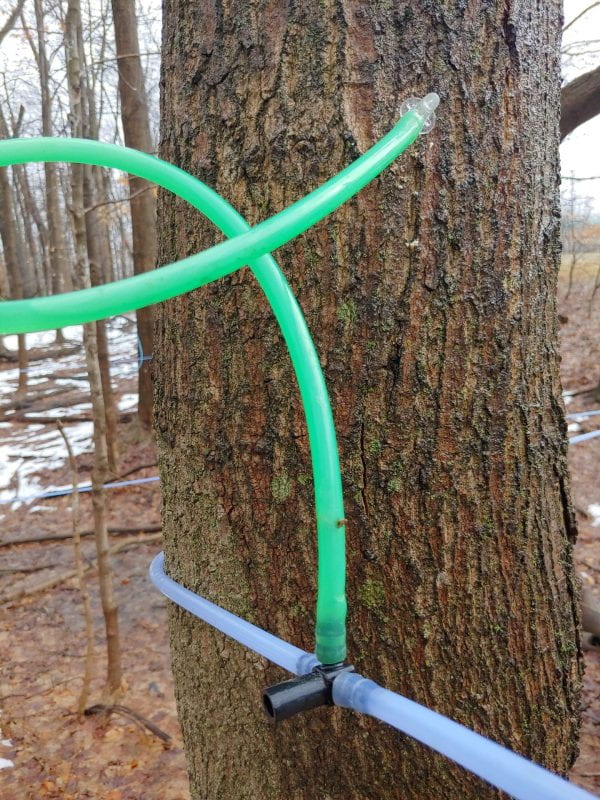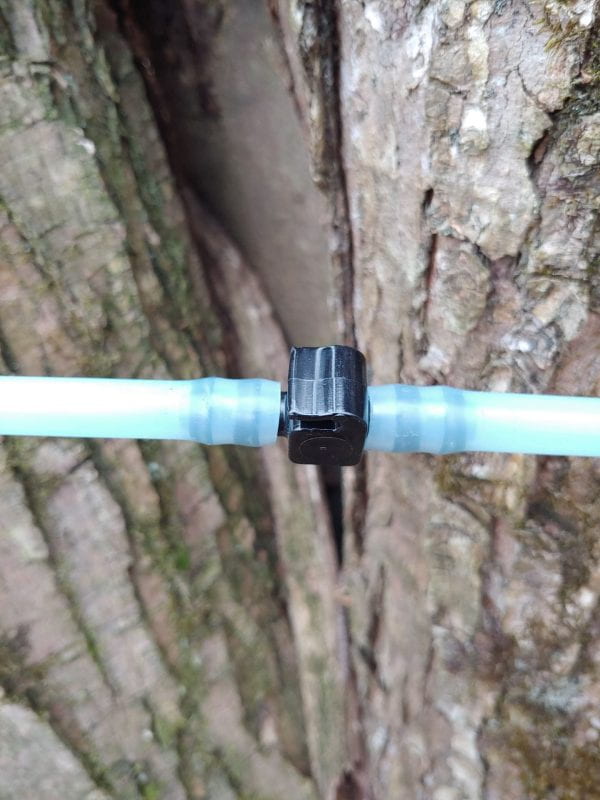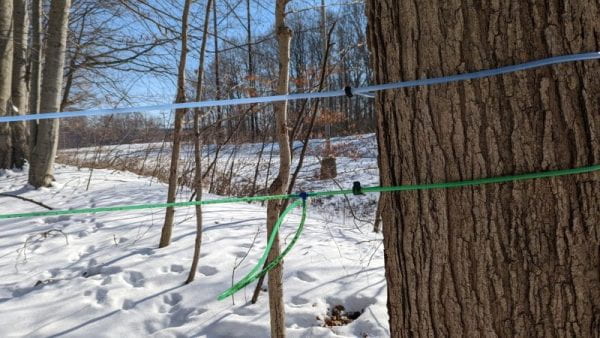Based on the forecast, it’s hard to tell when our season will launch at the Ohio State Mansfield campus, but we’ve been hard at work readying the woods for whenever Go Time is.
3 years of single tree lateral lines came down from the ACER project that examined differences between sap production in Freeman’s (red x silver or “Rilvers”) maples.
Lateral lines in bad shape from wildlife damage or sanitation issues were replaced. Some of these issues are pretty small and hard to spot unless you have your vacuum pump running. Other wildlife damage…guessing raccoon or coyote here, pretty obvious.
Bucked rounds were hauled and split to feed our new demonstration evaporator at the also brand new maple pavilion (more on that later!).
We’re nearly done replacing all of last year’s spouts.
As we find drops and T’s that need replaced, we are shifting to a pin- or peg-style T so that we cut off the old spouts when taps are pulled at the end of season.
New trees that have grown into a minimum tapping size have been added to the system. Surprisingly, our second main line that originally featured 99 trees when the tubing was installed in 2019 grew by 9 additional taps this year. This was a good reminder to keep a diameter tape handy when getting your sugarbush ready for the season. Sure, trees grow slowly, but they are growing and it’s sometimes surprising what just a few years can do when conditions are right.
End-line sensors are out gathering sunlight to keep our monitoring system operational, and we’re adding valves to the end of our main lines to facilitate a more complete and convenient sanitation regiment.
And our invasive species contract to control multiflora rose, particularly where it was worst along main lines 1 and 2, is already paying dividends with increased mobility and ease of access throughout the system. A chest-rigged brush cutter was used to sever stem clusters in tandem with a timely and targeted application of glyphosate to the cut stem surfaces. **This is a good reminder that any herbicide treatment in and around a working sugarbush should be done with caution! Being cognizant of compound half lives, targeted treatment that stays where it belongs, and a well-trained applicator are keys to ensuring these sometimes necessary steps help and don’t hurt.** Honestly, having the ability to freely negotiate through the woods wherever we please probably contributed to finding 9 additional taps along our second main line. I also couldn’t help but notice that the majority of our lateral sanitation issues were cropped up around the second main line too. Certainly trickle down penalties of thorny access because of a nasty invasive thicket infestation in the woods!
You literally could not walk through this area of the forest before, and the stem clumps that are left (and hopefully dead!) are the reason why.
One last major priority for this off-season will be attempting to remedy the long flat (at best!) stretches of main line between our pump house and where the majority of our taps start on main lines 4, 5, and 6. I’m sure that will be a learning process complete with a couple of bumps in the road, but the goal is to perhaps install a couple lift options to show producers different ways of overcoming this common challenge in Ohio maple woods. More on this last point later!!

















